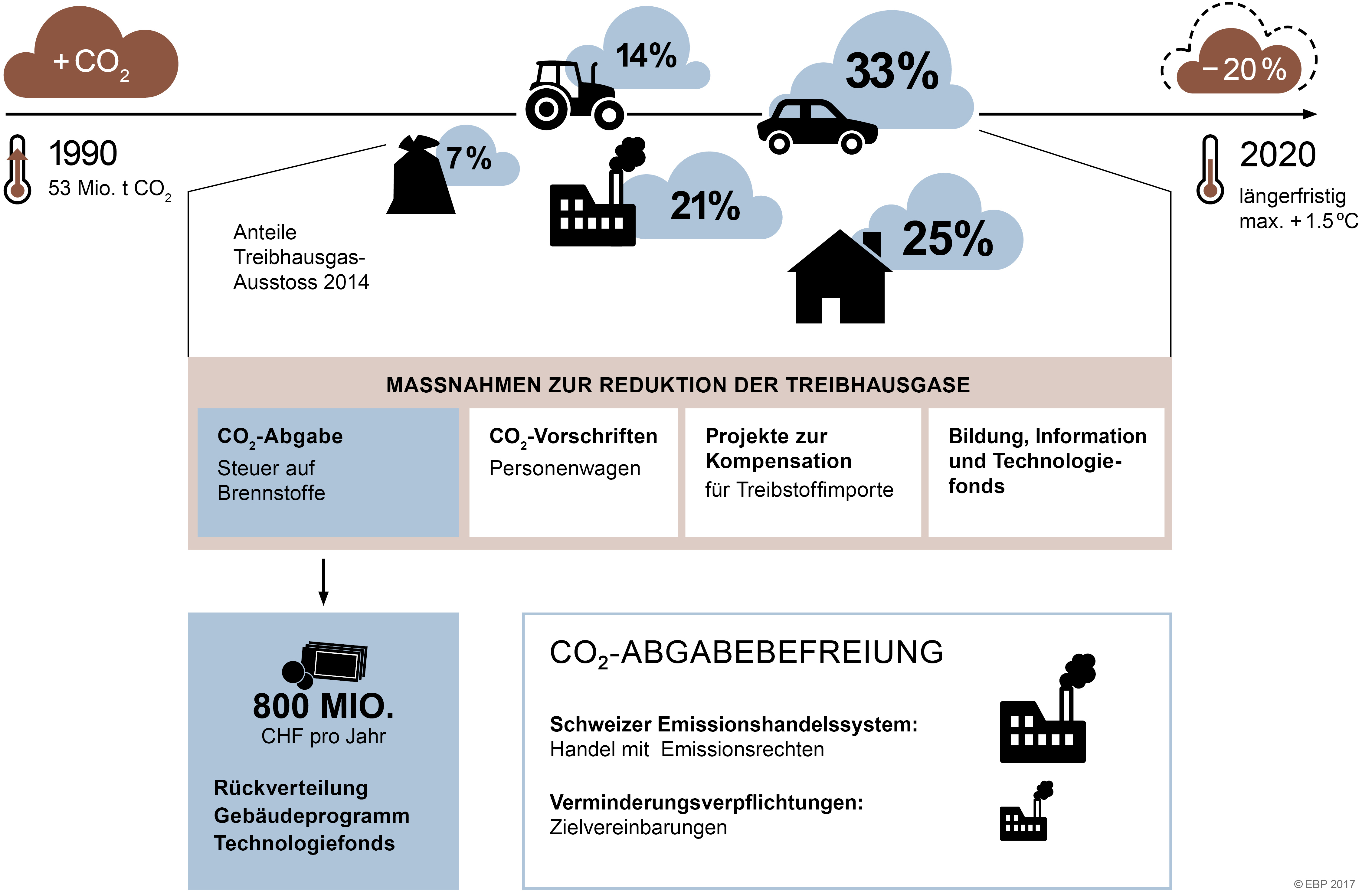

Personal Greenhouse Gas Budget-Approach in Switzerland
EBP analyzed the implementation of personal greenhouse gas budgets in Switzerland as an instrument for the long-term achievement of the country’s climate change mitigation goals.
Within the framework of the UN climate change conference in Paris in 2015 (COP 21), Switzerland committed to reducing its greenhouse gas emissions (GHGs) 50% by 2030 and 70-85% by 2050, as compared to emissions in 1990. These goals should contribute to the emission-reduction efforts being made by parties to the climate convention to keep global average temperature increase well below 2°C.
If Switzerland were only to use the existing climate change mitigation instruments included in the current CO2-law, the country would neither reach its national nor its international targets. According to studies, the price of CO2 would need to be significantly higher to reach the goals. Alternative climate change mitigation instruments are, therefore, needed to reduce emissions and to help the country meet its mitigation targets.
Personal Greenhouse-Gas Budgets as a possible Climate Change Mitigation Instrument
In the 1990s in Great Britain, a personal GHG-budget approach was analysed, which would permit each person in a country or region to produce a pre-defined amount of emissions. EBP studied this approach and checked its potential for being implemented in Switzerland.
Analysis of possible Design Options
As part of the study, EBP analyzed and discussed the different design options for such an approach. The following questions were considered:
- Which areas should be integrated into the approach: housing, mobility and/or consumption?
- How should the GHG-budgets be defined and the corresponding emission-production-rights be assigned to the population?
- How should the emission rights be used?
- When people exceed their allotted emissions, how should this be handled? Can emission rights be traded?
As a basis for the EBP study, the existing study from Great Britain and other examples of similar approaches from other countries were used.
Design options were discussed and further developed during a workshop with members of the Swiss Advisory Board on Climate Change (OcCC).

Grey Emissions as a Challenge
When it comes to consumption, the so-called “grey emissions” that result from goods being produced in foreign countries but consumed in Switzerland are highly significant and need to be considered in a personal GHG-budget approach. The EBP study includes a detailed analysis of the influence of grey emissions on different areas and places special emphasis on the significant proportion of such emissions destined for the consumer market.
GHG-Budget vs. Lifestyle
A budget-approach that directly targets an individual’s personal consumption habits, has a major influence on a person’s lifestyle. Conversely, the lifestyles of the population have an influence on the design of a budget-approach. The latter presents a significant challenge with regard to how well the budget-approach will be accepted by the targeted population.
Four fictitious persons were created to represent select segments of the Swiss population and to provide examples of how the budget-approach would affect their lifestyles, their options for taking actions to reduce personal emissions and how to manage their personal budgets. Furthermore, EBP has drawn conclusions and made recommendations for how the budget-approach could be introduced and communicated in Switzerland.









